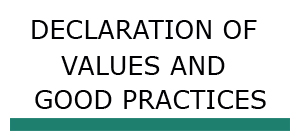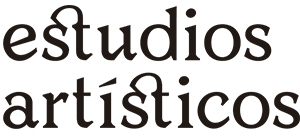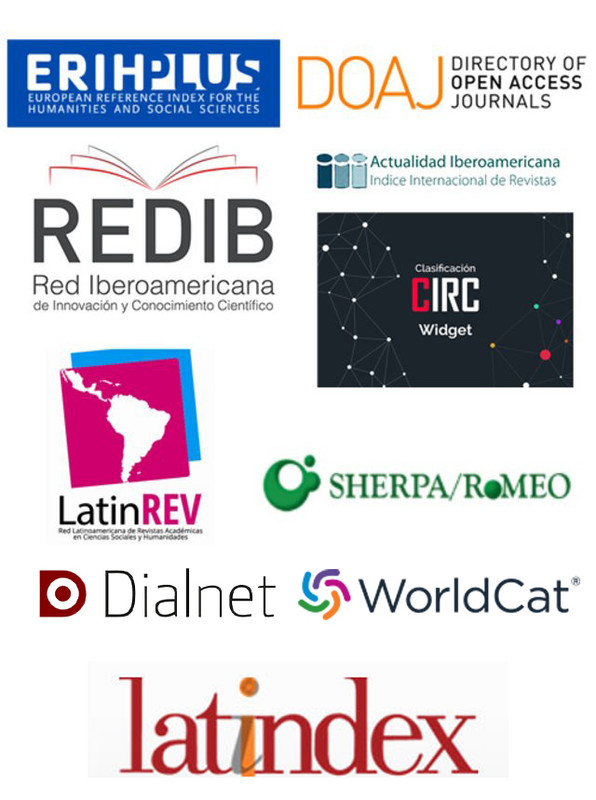
DOI:
https://doi.org/10.14483/25009311.22711Published:
2024-12-16Issue:
Vol. 11 No. 18 (2025): Enero-junio 2025Section:
Sección CentralSome considerations on Interactive Art
Algunas consideraciones del arte interactivo
Algumas considerações sobre arte interativa
Keywords:
Arte, estética, arte interactivo, interactividad, tecnología, ciencia (es).Keywords:
Art, aesthetic, interactive art, interactivity, technology, science (en).Keywords:
Arte, estética, arte interativa, interatividade, Tecnologia, ciência (pt).Downloads
Abstract (en)
This article explores practices within the field of Art and Technology that focus on interactivity, in particular, interactive art. We examine key concepts relevant to interactive art, such as the role of the interactor, interactive aesthetics, playfulness, and relational architecture, among other elements. In doing so, we consider the interactive works of artists such as Maurice Benayoun, Studio Azzurro, Marcel·lí Antunez Roca, and Rafael Lozano-Hemmer. Additionally, we question the definition of “interactive art” in light of contemporary computational technologies, particularly those involving artificial intelligence. We seek to to contribute to current debate by prompting reflection on the concept of interactivity and its evolving role in response to current technological advancements that encompass a range of systems designed to mimic human cognitive functions. Ultimately, we offer insights on interactive art, aiming to contribute to a broader understanding of interactivity in art and technology as a systemic, visual, technological, and aesthetic experience.
Abstract (es)
Este artículo explora prácticas dentro del campo del arte y la tecnología que se centran en la interactividad, en particular,arte interactivo. Examinamos conceptos clave relevantes para el arte interactivo, como el papel del interactor, la estética interactiva, el carácter lúdico y la arquitectura relacional, entre otros elementos. Para ello, consideramos las obras interactivas de artistas como Maurice Benayoun, Studio Azzurro, Marcel·lí Antunez Roca y Rafael Lozano-Hemmer. Además, cuestionamos la definición de “arte interactivo” a la luz de las tecnologías computacionales contemporáneas, en particular las que involucran inteligencia artificial. Buscamos contribuir al debate actual al impulsar la reflexión sobre el concepto de interactividad y su papel cambiante en respuesta a los avances tecnológicos actuales que abarcan una gama de sistemas diseñados para imitar las funciones cognitivas humanas. En última instancia, ofrecemos perspectivas sobre el arte interactivo, con el objetivo de contribuir a una comprensión más amplia de la interactividad en el arte y la tecnología como una experiencia sistémica, visual, tecnológica y estética.
Abstract (pt)
Este artigo explora práticas no campo da arte e da
tecnologia que se concentram na interatividade, em
particular, na arte interativa. Examinamos conceitos-
-chave relevantes para a arte interativa, como o papel
do interagente, a estética interativa, a ludicidade e a
arquitetura relacional, entre outros elementos. Para
isso, consideramos as obras interativas de artistas
como Maurice Benayoun, Studio Azzurro, Marcel·lí
Antunez Roca e Rafael Lozano-Hemmer. Além disso,
questionamos a definição de "arte interativa" à luz
das tecnologias computacionais contemporâneas,
particularmente aquelas que envolvem inteligência artificial. Procuramos contribuir para o debate
atual, impulsionando a reflexão sobre o conceito
de interatividade e seu papel mutável em resposta
aos avanços tecnológicos atuais que abrangem
uma variedade de sistemas projetados para imitar
as funções cognitivas humanas. Em última análise,
oferecemos perspectivas sobre a arte interativa,
com o objetivo de contribuir para uma compreensão
mais ampla da interatividade na arte e na tecnologia
como uma experiência sistêmica, visual, tecnológica
e estética.
References
Arantes, P. (2005). @rte e mídia: perspectivas da estética digital. Editora Senac.
Ascott, R. (2003). Telematic Embrace: Visionary Theories of Art, Technology, and Consciousness. University of California Press.
Bates, D. W. (2024). An Artificial History of Natural Intelligence: Thinking with Machines from Descartes to the Digital Age. University of Chicago Press.
Broeckmann, A. (2016). Machine Art in the Twentieth Century. MIT Press.
Brouwer, J., & Mulder, A. (Eds.). (2007). Interact or Die! NAi Publishers.
Couchot, E. (2003). A tecnologia na arte: da fotografia à realidade virtual. Editora da UFRGS.
Dietrich, E., & Associates. (2021). Great Philosophical Objections to Artificial Intelligence: The History and Legacy of the AI Wars. Bloomsbury Academic.
George, F. H. (1979). Philosophical Foundations of Cybernetics. Abacus Press.
Giannetti, C. (2002). Estética Digital. Angelot.
Grau, O. (2007). Arte Virtual: Da Ilusão à Imersão. Editora UNESP/SENAC.
Fredrich, V., & Oliveira, A. M. (2022). Relações entre imagem e corpo na arte interativa. Ouvirouver: Revista dos Programas de Pós-graduação do Instituto de Artes, 18(2), pp. 399–418.
Lozano-Hemmer, R. (2007). Some Things Happen More Often Than All of the Time. Turner.
Hildebrand, H. R., Sogabe, M. T., Fogliano, F., Leote, R., & Blumeinshein, J. (2009). SCIArts – Equipe Interdisciplinar. Retrieved December 4, 2009, from «http://www.sciarts.org.br»
Kerckhove, D. (1999). Inteligencias en conexión: hacia uma sociedade de la web. Editorial Gedisa.
Kwastek, K. (2013). Aesthetics of Interaction in Digital Art. MIT Press.
Machado, A. (2007). Arte e Mídia. Jorge Zahar Ed.
Manovich, L. (2006). El Lenguaje de los Nuevos Medios de Comunicación: La Imagen en la Era Digital. Paidós.
Manovich, L. (2015). Software Takes Command. Bloomsbury Publishing.
Massumi, B. (2008). The thinking-feeling of what happens. Inflexions, (1). Retrieved from «http://www.inflexions.org»
McLuhan, M. (1994). Understanding Media: The Extensions of Man. MIT Press.
Mondloch, K. (2010). Screens: Viewing Media Installation Art. University of Minnesota Press.
Mulder, A. (2007). The exercise of interactive art. In J. Brouwer & A. Mulder (Eds.), Interact or Die! (pp. 52-69). NAi Publishers.
Mulder, A. (2010). From Image to Interaction: Meaning and Agency in the Arts. V2_Publishing.
Nancy, J.-L. (2014). El Arte Hoy. Prometeo.
Nilsson, N. J. (2010). The Quest for Artificial Intelligence: A History of Ideas and Achievements. Cambridge University Press.
Oliveira, A. M. (2023). Future imaginings in art and artificial intelligence. Journal of Aesthetics and Phenomenology. 09(2), pp. 209-225. Retrieved from «https://www.tandfonline.com/doi/full/10.1080/20539320.2022.2150467»
Paul, C. (2003). Digital Art. Thames & Hudson.
Popper, F. (2007). From Technological to Virtual Art. MIT Press.
Roca, M. A. (2006). Marcel·lí Antúnez Roca. Retrieved April 20, 2006, from «http://www.marceliantunez.com»
Salter, C. (2010). Entangled: Technology and the Transformation of Performance. MIT Press.
Simanowski, R. (2011). Digital Art and Meaning: reading kinetic poetry, text machines, mapping art, and interactive installations. University of Minnesota Press.
Simondon, G. (2017). On the Mode of Existence of Technical Objects (C. Malaspina & J. Rogove, Trans.). University of Minnesota Press.
Spanghero, M. (2003). A Dança dos Encéfalos Acesos. Itaú Cultural.
Sommerer, C., Jain, L., & Mignonneau, L. (Eds.). (2008). The Art and Science of Interface and Interaction Design. Springer.
Turner, P. (2017). A Psychology of User Experience: Involvement, Affect and Aesthetics (2nd ed.). Springer Nature Switzerland AG.
Wood, A. (2007). Digital Encounters. Routledge.
How to Cite
APA
ACM
ACS
ABNT
Chicago
Harvard
IEEE
MLA
Turabian
Vancouver
Download Citation
License
Copyright (c) 2024 Estudios Artísticos

This work is licensed under a Creative Commons Attribution-NonCommercial-ShareAlike 4.0 International License.

Este obra está bajo una licencia de Creative Commons Reconocimiento 4.0 Internacional.
The ESTUDIOS ARTÍSTICOS Journal exposes the guidelines on good practices in scientific publication, as a framework for the development and implementation of its own policies and ethics system in the publication. The Editors of the journal ARTISTIC STUDIES, select the reviewers under guidelines of impartiality and professionalism, so that they can ensure fair evaluations, the Editors guarantee the authors that the appropriate reviewers are selected for revisions of their works, and readers can trust the peer review process.
The ESTUDIOS ARTÍSTICOS Editors are aware of the work necessary to make firm decisions and the creation of solid editorial processes, designed to manage their interests and promote an efficient and sustainable publishing system, which will benefit academic institutions, publishers of journals, the authors, those who finance the research and the readers. Good practices in scientific publication do not develop spontaneously but are consciously established and actively promoted.
Responsibilities of the authors of the works
All the authors that are reflected in the work must have actively contributed to it.
ESTUDIOS ARTÍSTICOS provides the authors with clear instructions explaining the concepts of academic authorship, specifying that the contributions should be clear. The editors of ARTISTIC STUDIES request the declaration to the authors that they meet the criteria of the journal in relation to the authorship. In the event of a conflict in the authorship of a published work, the ARTISTIC STUDIES Editors will contact the author who claims their authorship to establish the veracity of the case. If the Editors deem it appropriate, temporary access to the article in question will be closed until a final decision is made.
The documents to be published must not have been published before









